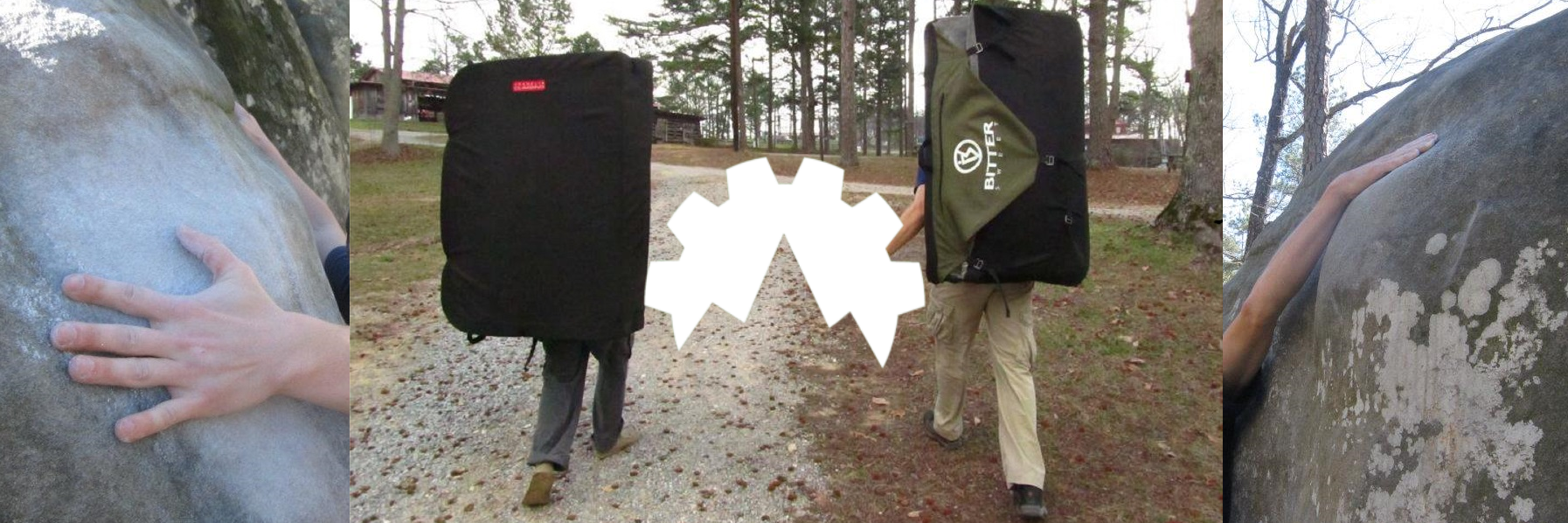You know what Jams My Cams? Incut Edges and their “depth.”
The Tension Block, a portal training system many take to the crag to use for warm-ups or for single-hand weighted hang training, is a wonderful tool. The new one boasts 20mm, 10mm, 8mm, and 6mm edges along with generous 25mm two-finger and mono pockets. The old one, however, had two different edges. Instead of the 8mm and 6mm on the back, it had a 10mm and a 7mm incut edge, but how deep were they really? Today, we will explore the TRUE depths of these ancient edges.
There are plenty of other portable type training boards and blocks that boast similar aggressive incut hold types to elicit pinpoint edge training. The severity of the incut allows for a bigger bite into the skin and consequently more of the fingertip will fit into the space making for greater purchase. What this means is that the actual edge, the space where our skin is in contact with the hold can both be larger and smaller at the same time. This can be more painful if one were to train in the half crimp or full crimp position, bringing the distal phalanges perpendicular to the outside edge. But, it also usually means that you can hold more than if it were a flat edge of the same depth measurement as the sharp side digs into the middle of the finger pad. It can also be a good training tool to prepare your skin for such sharp holds like the razor-sharp granite incut crimps in North Carolina. Now, if you were to get in more of a drag grip, with your fingers hooking over and into the incut, then you have more skin contact AND a mechanical advantage at the joint, one that only increases with the angle of the incut.
Additionally, we have the common campus rungs of 19mm (3/4”), 25mm (1”), and 32mm (1-1/4”), all of which have an incut slope of 12 to 15 degrees in order to make them flat relative to the ground once attached to the overhung board. They are measured perpendicularly from the board to the outermost point of the hold. So, while less incut that that of a Block type hold, and with more rounded on the edge for comfort since we typically use a campus board in the open hand position, you still get more “edge” than the indicated measurement would suggest. For the small rung you get nearly a full millimeter of extra hold length. For the medium rung, approximately 1.5 millimeters. Finally, for the large rung you get almost 2 full millimeters. This makes your new true edges 20mm, 26.5mm, and 34mm. This may not seem like much since a millimeter is so small, but a s we discussed in Part 1, the difference a millimeter makes can drastically change how good a hold will feel. Additionally, because of the large, rounded edge, you are getting even more skin contact thus, making it feel more secure because of the angle and surface area. It is hard to give an exact measurement here because of how everyone’s different joint lengths will bend over the edge, but you can assume an additional 1 to 2mm of contact surface. This is not a downside by any means. All of this is purely an education in not expecting the labeled depth to feel the same if you were to move from, say the 25mm campus rung to a square cut 25mm edge and hang in the same open-handed way. The square cut will likely feel harder since your actual contact area is reduced.
Another advantage of some of these companies, including Metolius and Lattice, is that the rung is reversible. If you flip the rung over, now you are getting a true to size edge that is also sloped down at the angle of the campus board. This can train actual contact strength as you fight to utilize all of the available surface. If and/or when you transition to a square cut edge of a similar size, that flat edge will feel all the better.
The complaint here isn’t too severe this time. I just think that it is important in the user notes for companies to provide the two different measurements when it comes to incut edges: the depth of the cut, and the actual length of the edge. As I stated before, I am a huge proponent of consistency when I train. There are already so many variables when it comes to getting better, the more control of those variables you have, the better your training will become, and it all starts with accurate information from the training tool manufacturer. However, you CAN use these variables to your advantage when training, either by training in both of the available hand/hold positions, or focusing on your weak points/dominant hold type of your local area or projects.
Tylor Streett, claims to be a man of accuracy, but usually ends up only being accurate-ish.
